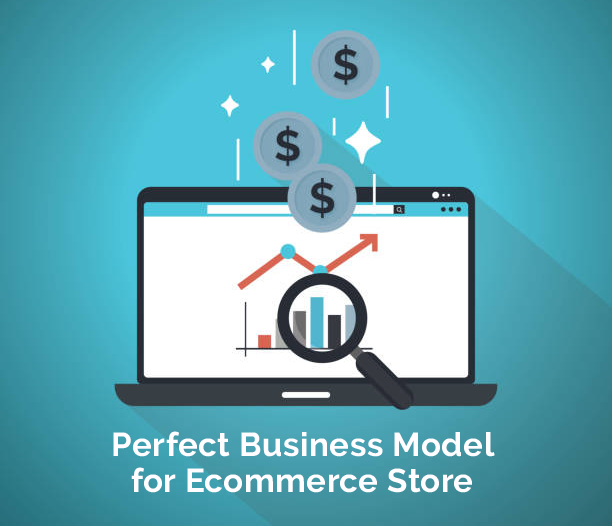The Perfect Business Model for Your Ecommerce Store
If you’re among the 96% of Americans who shop online, you’ve probably stumbled upon a successful eCommerce store and wondered at one point or another – what did it take to get here? While it may seem from the shopper’s perspective as if lucrative eCommerce businesses simply run themselves, the reality is that someone put in the time and effort to start that store – and they did so by following a specific business model.
Oftentimes, people have an idea for something they’d like to sell online, but they are unsure of where to start. The good news is that no matter your industry, type of products, of any other distinguishing characteristics, your starting point will be the same as everyone else’s: choosing a business model for your commerce store.
Why Do Ecommerce Stores Need a Business Model?
With tens of millions of eCommerce stores operating today, a common sentiment among prospective sellers is that it can’t be that hard to get an online business started. Yet, taking the time to decide on a business model that works for you is the very element that will allow you to stand out against the vast sea of stores. It also provides a clear answer to the fundamental question: How will my store make money?
To start answering that question and determining your business model, you must first determine your customer. This step is also known as establishing your eCommerce business classification.
Ecommerce Business Classifications
There are four main business classifications to choose from. Explore each to find out which best fits the nature of your business below.
Business-to-Business
As you may have guessed, a business-to-business (B2B) approach works when your business sells products to another business. Although this model often applies to service providers, there are some supply companies which provide physical products to other businesses. Although B2B eCommerce continues to grow and is now a 7.6 trillion-dollar market, entering into this space often requires a greater amount of startup cash than other models. You’ll likely see steady growth and large order volume, but may find the longer sales cycles and market competition challenging.
Business-to-Consumer
Business-to-consumer (B2C) is the sector that appeals best to most people starting eCommerce stores. It represents businesses who sell directly to consumers and therefore applies to everything from clothing to home décor. While it is the deepest eCommerce market and there are some businesses operating exclusively online, a large portion of this sector is made up of retailers who also have a physical presence.
B2C eCommerce is an attractive business model for multiple reasons. Not only does this approach require very little startup cash – especially if you choose a sales method that doesn’t necessitate stocking inventory, such as drop shipping – but it also allows you to make sales round-the-clock without the drawn-out process of generating quotes or contacting purchasing departments.
Consumer-to-Consumer
Consumer-to-consumer (C2C) must often be developed as a large-scale operation in order to be successful. These unique channels allow consumers to trade, sell, and purchase items amongst each other, while the site receives a small commission. To compete in the leagues of eBay and Craigslist, you must have a very detailed business plan. While the business model has been successful for some platforms, C2C is often unsustainable for smaller enterprises.
Consumer-to-Business
Consumer-to-business (C2B) is an often-overlooked eCommerce model, but it has gained traction in recent years. It includes individuals who sell services to businesses through freelancing platforms such as Upwork, as well as affiliate marketing for customers who add links to their websites. Affiliate marketing is advantageous in that it requires minimal investment and affords a high level of flexibility, but it does require you to have ample traffic to your website or a significant social outreach. Another downside is the low revenue: oftentimes, you’ll only receive a small amount for every product sold, so you’ll need volume for this approach to be a feasible source of income.
Once you’ve established which business classification works for you, it’s time to settle on a business model. Options include:
- Drop shipping: Mentioned above, this process involves using your eCommerce store as a platform to sell products from your suppliers directly to consumers. The supplier ships to your customer so you never have to hold inventory.
- Wholesaling/Warehousing: Wholesaling and warehousing require you to manage inventory and stock and fulfill customer orders. As such, they require a sizable up-front investment.
- On-Demand Manufacturing: If you want to sell your own products but don’t’ have the money or time to produce them, this option might be best for you. On-demand manufacturing allows you to test new products for minimal startup costs, and have the contracted manufacturer create your product and ship directly to the consumer.
- White Label: With private white, you choose products from suppliers but design your own package and label. Like on-demand manufacturing, it’s a good way to test products.
- Subscription: These business models lock customers into scheduled orders and work well for driving sales consistently. While this sector has grown recently, finding the right niche can be challenging.
As you can see, there are many factors to determine when choosing your business model. Yet, taking the time to plan this important first step will help set your store up for long-term success.

